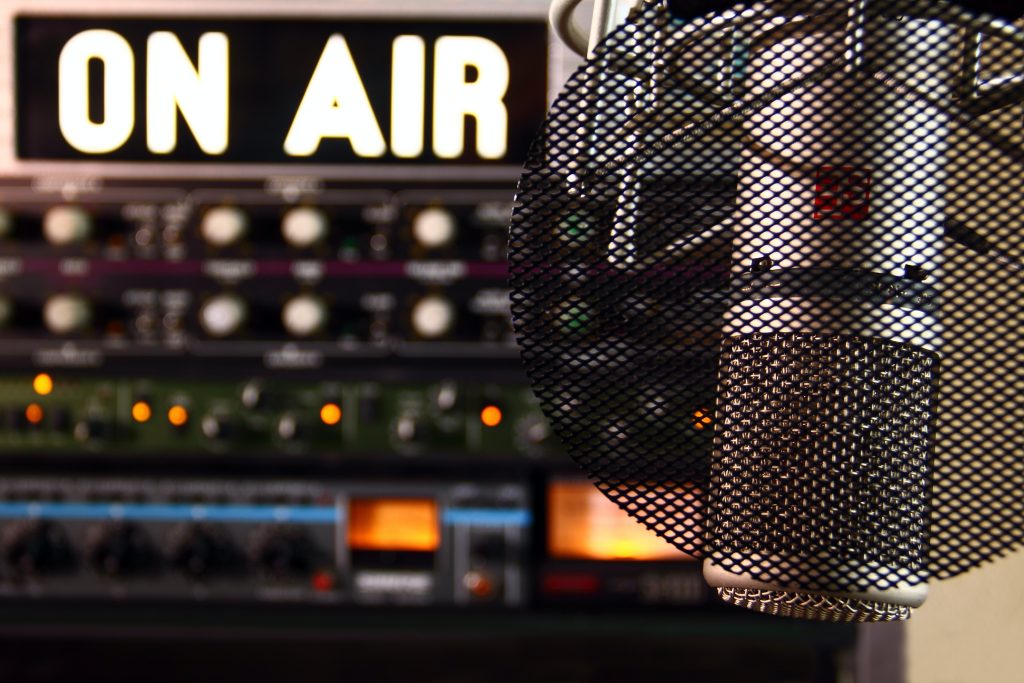The public hearing on the Draft law on copyright and related rights ended on February 19, 2023. Awaiting the final wording of the Draft law, we would like to take this opportunity to draw attention to the oversights regarding the definition of the term broadcast (Article 19) and rebroadcast (Article 31), i.e., we deem it necessary, in the light of technological changes, to redefine the specified forms of use of the copyrighted works. We also feel that it is necessary, as part of the Draft law provisions governing Audiovisual contracts, to provide for the right of the author to fair compensation for all forms of public communication of his or her work.
Article 29 of the Draft law acknowledges the right of the author to grant or deny broadcasting of their copyrighted work. Within the meaning of the Law on Copyright and Related Rights, the term broadcasting implies the communication of copyrighted work to the public through the transmission of radio or television programme signals from the entity performing the broadcast – broadcasting organization, to the receiving devices via network transmitter (terrestrial broadcast), cable distribution systems (cable broadcasting) or satellite stations (satellite broadcast).
We deem that it is necessary to adapt or to provide for a new definition of broadcasting agency, since this is an older definition which is no longer relevant in these new circumstances of digital programme broadcasting.
Namely, the Draft law explanation (hereinafter: Explanation) specifies the following: “It is specified, for the purpose of application of this law, that an entity performing the act of broadcasting shall be considered a broadcasting organization within the meaning of the provisions of the law”.
This had certainly been the case when the activity of broadcasting organizations had consisted of transforming audiovisual content into electromagnetic or other signals, and their wireless, wired, or mixed transmission to the public. This technical side of the broadcasting organizations’ activity came with the obligation of acquiring the broadcast authorization.
However, after the transition to TV programme digital broadcast, the broadcasting organizations (provided that we imply traditional television stations such us RTS, Prva, Pink, and the like with this term) no longer deliver the broadcast of their television programme signal to the receiving devices, with this now being performed by the Public enterprise “Broadcasting Technology and Communications” for them. It is for this exact reason that the regulation of electronic media no longer refers to them as broadcasters, but rather as media service providers.
Concurrently, the statements from the Explanation that a “media service provider shall be considered an entity performing the broadcast of radio and TV programme, and also an entity providing access to audiovisual content on demand, an entity which exclusively makes audiovisual content available through the global information network (Web casting, live streaming i sl.), and also an entity performing programme rebroadcasting” don’t hold water.
Namely, only an entity having the editorial responsibility for the choice of audiovosual content of the audiovisual media service (television), i.e., audio content of radio media service, and the entity determining the method of content organization (Article 4 paragraph 1 idem 4) of the Electronic Media Law) shall be considered a media service provider. Hence, the key characteristic which defines the media service provider is that this is an entity which has control over the choice of programme content being published, and therefore holds the responsibility over that content.
On the other hand, it is insignificant for the term media service provider which entity and by which method is broadcasting that programme (terrestrial, via satellite or online). This can be the media service provider itself, as in the event of radio broadcasting (after the digitalization of radio programme this will no longer be the case either), but also another entity as is the case with television programme broadcasting. In addition, the entity rebroadcasting the programme will not be considered a media service provider.
However, broadcasting organizations, though no longer performing direct broadcasting of the programme, in a legal sense still undoubtedly hold absolute control over the activity of broadcasting. Therefore, we deem that it is necessary to expand the definition of broadcasting organization so that it also includes the entities under whose control and responsibility broadcasting is being performed, and not only the entities directly performing the activity of broadcast.
Further on, we feel that the second part of the definition of broadcasting “to receiving devices via a network of transmitters (terrestrial broadcast), cable distribution systems (cable broadcast) or satellite stations (satellite broadcast)” is overly narrow, since it fails to include for example linear broadcast of programmes via the internet (webcast and simulcast).
Consequently, under linear programme broadcast we mean broadcasting for the purpose of simultaneous viewing of the programme based on a programme schedule, unlike the programmes which are viewed on viewer’s request at a time chosen by the viewer (on demand), and which in terms of copyright protection fall into the category of authorization for making interactively available (making works available to the public under the terminology of the draft law). The programme can be broadcast via the internet linearly (simulcast and webcast), as well as interactively (catch up, VOD and the like).
Having the above in mind, we propose an amendment to Article 29 of the Draft low as follows:
4.2.7. Right to broadcast of works
Article 29
(1) The author, i.e., copyright holder has the exclusive right to grant or deny the broadcast of their work.
2) Within the meaning of this law, broadcasting shall be considered the communication of works to the public through the transmission of radio or television programme signals from an entity performing OR AN ENTITY RESPONSIBLE AND IN CONTROL OF THE PERFORMANCE OF the broadcast (hereinafter: broadcasting organization), to the receiving devices via a network of transmitters (terrestrial broadcast), cable distribution systems (cable broadcast), satellite stations (satellite broadcast) OR GLOBAL INFORMATION NETWORK IN THE FORM OF WEBCAST OR SIMULCAST (INTERNET BROADCAST).
Article 31 of the Draft law acknowledges the right of the author to grant or deny the rebroadcast and cable rebroadcast of their copyrighted work. Rebroadcasting implies simultaneous communication of copyrighted work to the public in its unaltered and integral form by an entity which is different from the broadcasting organization broadcasting the copyrighted work originally. Cable rebroadcast is performed via cable or microwave system and entails the simultaneous, unaltered, and uninterrupted rebroadcast of the initial wired, wireless, or satellite broadcast of television or radio programme intended for reception by the public.
We deem it necessary for the right to broadcast to be defined on a technically neutral basis, i.e., that the same rules be applied regardless of whether rebroadcasting is being performed via the cable distribution system, IPTV, direct to home, OTT, or using any other type of technology.
This is especially important since the term cable rebroadcast which is taken from the Directive on Satellite Broadcast and Cable Rebroadcast of Copyrighted Works and Related Rights Objects fails to include the activity of television programme rebroadcast via a closed internet protocol television network (IPTV) performed by the electronic communications operator, nor through the OTT service, which represents an information society service.
The definition of rebroadcast given in the current law is general in character and technologically neutral, so there is no need to additionally prescribe the right to cable rebroadcasting, which only adds to the confusion.
It is also necessary to extend the obligation of the exercise of rights through an organization for the collective exercise of copyrights and for those new methods of programme rebroadcast, as was done by the Directive EU 2019/789 of April 17, 2019.
Having the above in mind, we propose an amendment to Article 31 of the Draft law as follows:
4.2.9. RIGHT TO REBROADCAST
Article 31
(1) The author, i.e., copyright holder has an exclusive right to grant or deny the REBROADCAST of their work.
(2) Within the meaning of this law, rebroadcasting shall be considered the simultaneous communication of the work to the public in its unaltered and integral form by an entity different from the broadcasting organization broadcasting the work originally OR AN ENTITY RESPONSIBLE AND IN CONTROL OF THE BROADCAST.
(3) In the event of REBROADCAST the author, i.e., copyright holder exercises hir or her right solely through an organization for the collective exercise of copyrights.
(4) The provision of paragraph 3 hereof does not apply in the event of REBROADCAST of radio or television program transmission, which is under the ownership of the broadcasting agency, or which the broadcasting agency has acquired the rights for from third parties.
(5) In the event that the broadcasting organization and the ENTITY PERFORMING THE REBROADCAST should fail to reach an agreement on the terms of the REBROADCAST of the broadcasting organization’s programme, each of the interested parties can address one or several mediators for assistance.
(6) Should the mediator submit a proposal for dispute resolution to the interested parties, and the proposal not be rejected in writing within three months from the receipt date thereof, the proposal shall be considered as having been accepted by the interested parties.
(7) The provisions of the law governing mediation shall be applied to the mediation process from this article accordingly, unless otherwise prescribed by this law.
Finally, we propose an addition of a new article which would prescribe the right of the author of audiovisual work to fair compensation for all forms of public communication of their work. Namely, it is standard practice that the author as a weaker party (compared with the producer) is forced to assign all ownership rights over the audiovisual work to the producer. This would secure the realization of a set compensation for the author after the transfer of rights, solely through an organization for the collective exercise of copyrights. The specified right would represent a counterpart to the fair compensation right from article 24 of the Draft law.
Having the above in mind, we propose an amendment to Articles 108-114 governing the Audiovisual contract with the addition of a new article:
6.2.3.8. Audiovisual contract
Article —
Should the author assign his or her right from articles 31, 32, 34. and 35 hereof to the producer of the audiovisual work, he or she shall retain the right to fair compensation from rebroadcasting and cable rebroadcasting of the work, public communication and making the work available to the public, public communication of the broadcasted work and public communication from sound and image carriers.
Authors can exercise their right to compensation from paragraph 1 thereof solely through an organization for the collective exercise of copyrights.
The author may not renounce his or her right to fair compensation from paragraph 1 hereof. The right to fair compensation cannot be the subject of renunciation, disposal for life and enforcement.




